How To Grow Bottle Gourd from Seed to Harvest
Updated: 6 Dec 2023
273
Explore the way of bottle gourd cultivation with our concise guide on “How to Grow Bottle Gourds from seed to harvest” Uncover the unique uses of these versatile cucurbits, whether destined for your kitchen or transformed into distinctive birdhouses. This article distills essential insights, from seed germination to bountiful harvests, ensuring you navigate the growing process with ease. Dive into the world of bottle gourds and unlock the secrets to cultivating these quirky plants successfully.
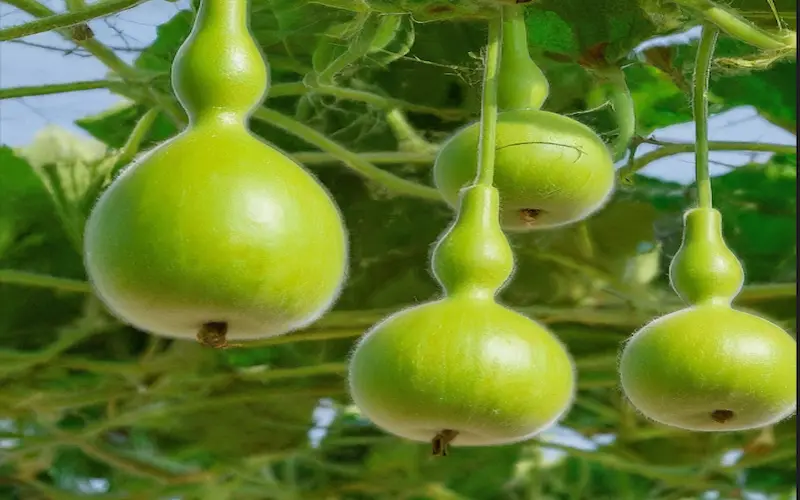
Getting Started Bottle Gourd Cultivation Steps
A. When to Start Bottle Gourd Seeds
Embark on your bottle gourd growing journey by understanding the optimal timing for seed initiation. Bottle gourd seeds thrive in warm temperatures, so plan to start them indoors approximately 5-7 weeks before the last expected winter in your region. This early start ensures robust seedlings ready for transplantation when the outdoor conditions are favorable.
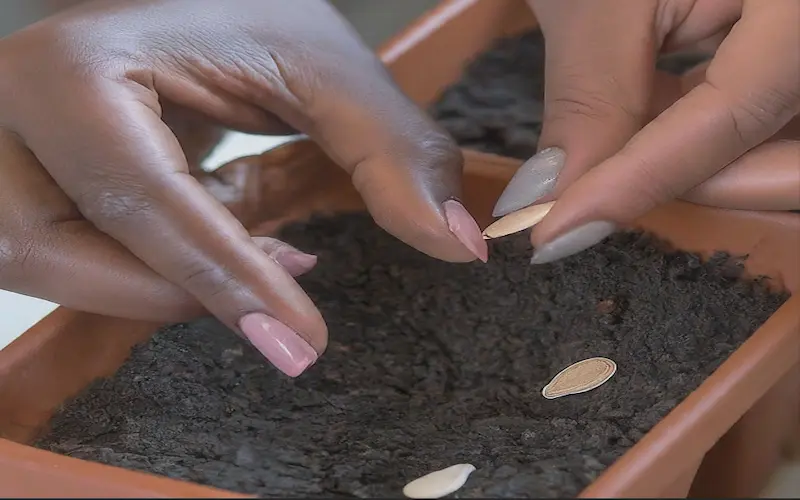
B. Choosing the Right Planting Area
Selecting the perfect planting area is crucial for the successful bottle gourd cultivation. Pot for a location that receives ample sunlight, as these plants thrive in full sun exposure. Additionally, ensure the soil is well-draining to prevent water logging, which can be detrimental to the delicate roots of the bottle gourd plants.
C. Preparing the Planting Area
Prepare the planting area meticulously to provide an optimal environment for bottle gourd cultivation. Clear the selected space of debris and weeds, allowing the plants to establish themselves without competition. Consider incorporating organic matter into the soil to enhance fertility and promote healthy root development.
By following these initial steps, you set the foundation for a thriving bottle gourd garden, setting the stage for successful germination and robust plant growth.
Germination and Seedling Care
A. Germinating Bottle Gourd Seeds
- Seed Preparation: Before germination, soak the bottle gourd seeds in water for 24 hours. This softens the seed coat and encourages faster germination.
- Germination Medium: Use a well-draining seed-starting mix to sow the seeds. Ensure the medium stays consistently moist during the germination period.
- Temperature and Light: Maintain a warm environment for germination, ideally around 70-95°F (21-35°C). Provide adequate light, either natural sunlight or fluorescent grow lights.
- Transplanting Seedlings Outside: Once seedlings have developed two to three true leaves, and the threat of frost has passed, transplant them outdoors. Space the plants according to their mature size, typically 12 to 18 inches apart.
B. Transplanting Seedlings Outside
- Choosing the Right Time: Aim to transplant seedlings when the soil has warmed, and the danger of frost has passed. This is usually around 2-4 weeks after the last expected frost date in your area.
- Preparing the Outdoor Site: Choose a spot that receives sunlight and has soil that drains well. If growing vertically, provide sturdy supports or trellises for the vines to climb.
- Transplanting Process: Gently remove seedlings from their containers, ensuring minimal disturbance to the roots. Dig holes in the soil at the same depth as the seedling containers and place the seedlings, then water thoroughly.
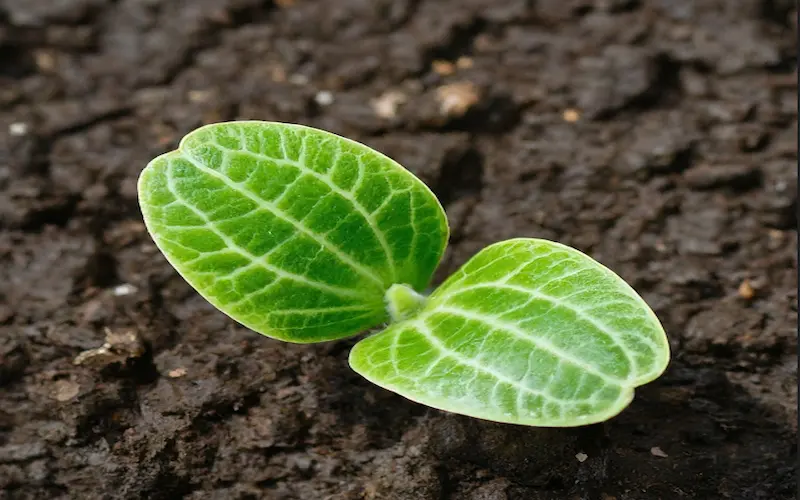
C. Watering Requirements
- Early Watering Needs: Keep the soil consistently moist during the early stages of growth. Water at the base of the plant to avoid wetting the leaves, which can contribute to diseases.
- Established Plant Care: As the plant matures, space out watering intervals. Allow the soil to dry slightly between watering to prevent issues like root rot.
- Mulching Benefits: Apply a layer of natural mulch around the foundation of the plants to hold soil dampness, smother weeds, and control soil temperature.
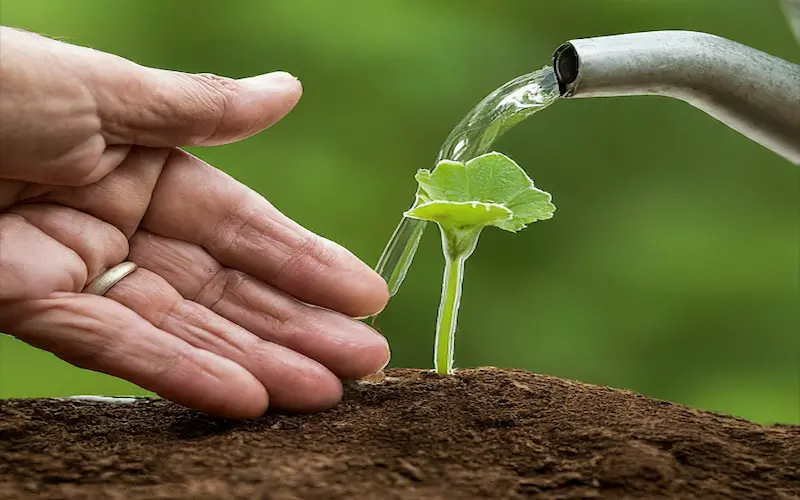
D. Soil Selection and Preparation
- Soil Preferences: Bottle gourds flourish in well-depleting, supplement rich soil. Revise the dirt with fertilizer or natural make a difference to improve fruitfulness.
- Climbing Support: Provide sturdy support structures for bottle gourd vines, especially if growing vertically. This helps prevent breakage and encourages upward growth.
By mastering these germination and seedling care practices, you lay the groundwork for a robust bottle gourd harvest, ensuring healthy plants that produce abundant fruits.
Plant Growth and Maintenance
A. Steps for Bottle Gourd Cultivation
- Early Growth: Bottle gourd plants exhibit rapid growth during the first few weeks. Monitor for any signs of stress, pests, or diseases and address them promptly.
- Vine Development: As the plants mature, they produce sprawling vines. Proper support, such as trellises or stakes, becomes increasingly important to prevent damage and promote efficient use of garden space.
- Fertilization Routine: Apply a balanced, organic fertilizer every 3-4 weeks to sustain healthy growth. Avoid excessive nitrogen, as it can lead to excessive foliage at the expense of fruit development.
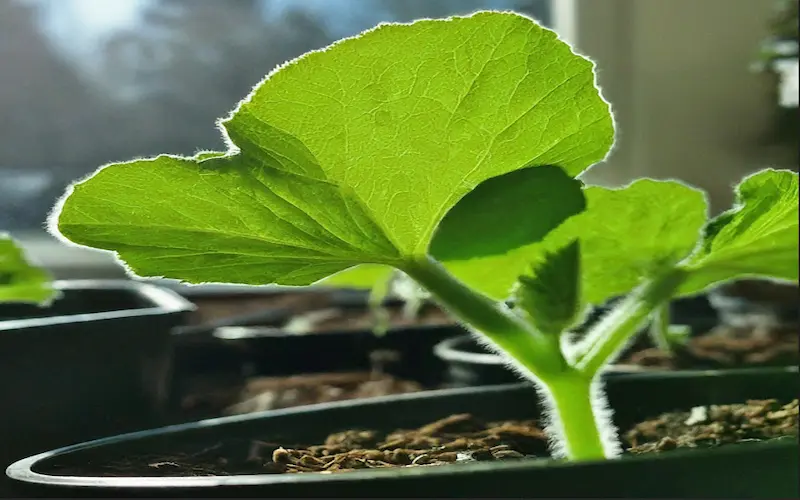
B. Caring for Bottle Gourd Plants
- Pruning Techniques: Trim excess foliage and lateral branches to enhance air circulation and sunlight penetration. This minimizes the risk of diseases and ensures the energy is directed toward fruit production.
- Weed Control: Regularly remove weeds around the plants to reduce competition for nutrients and water. Be cautious during weeding to avoid damaging the shallow roots.
- Pest Vigilance: Keep a watchful eye for common pests such as aphids and cucumber beetles. Employ natural remedies like neem oil or insecticidal soap to manage infestations without harming beneficial insects.
C. Prerequisites for Successful Cultivation
- Sunlight Exposure: Ensure the plants receive no less than 6-8 hours of direct daylight everyday for ideal development and natural product advancement.
- Temperature Considerations: Bottle gourds thrive in warm temperatures. Protect plants from late-season frosts, and be mindful of sudden temperature drops.
- Consistent Watering: Maintain a consistent watering schedule, especially during dry spells. Drip irrigation is an efficient method, ensuring the soil remains consistently moist without causing water-related issues.
D. Providing Organic Fertilizers
- Choosing the Right Fertilizer: Opt for organic fertilizers rich in phosphorus and potassium to promote flowering and fruiting. Compost, well-rotted manure, or organic liquid fertilizers are excellent choices.
- Application Frequency: Apply fertilizers every 3-4 weeks during the growing season. Avoid over-fertilizing, as it may lead to excessive vine growth with limited fruit production.
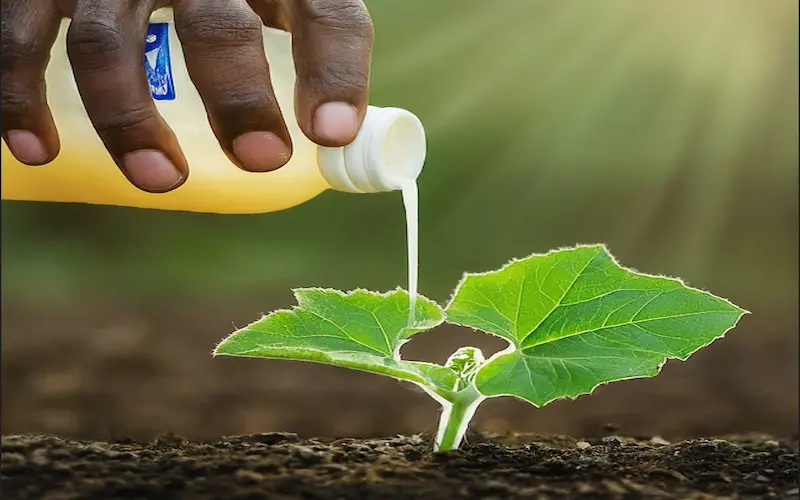
E. Troubleshooting Common Issues
- Disease Prevention: Use preventive measures such as proper spacing, pruning, and well-draining soil to minimize the risk of diseases like powdery mildew and downy mildew.
- Dealing with Pests: Employ natural predators, like ladybugs, or use organic insecticides to control pest populations without resorting to harsh chemicals.
By following these plant growth and maintenance practices, you ensure your bottle gourd plants thrive throughout the growing season, culminating in a bountiful harvest of healthy and flavorful gourds.
Pollination and Flowers Stage of Bottle Gourd Cultivation
A. Hand-Pollination Techniques
- Understanding Gourd Flowers: Bottle gourd plants produce separate male and female bloom on a similar plant. Recognizing these distinctions is crucial for successful hand-pollination.
- Identifying Male and Female Flowers: Male flowers typically appear first and are distinguishable by a slender stem. Female flowers have a small swelling at the base, which will become the gourd if pollination is successful.
- Hand-Pollination Process: To ensure adequate pollination, transfer dust from the male bloom’s stamen to the female blossom’s shame using a small brush or cotton swab. Repeat the process as more flowers open.

B. Understanding Bottle Gourd Flowers
- Flower Anatomy: Bottle gourd flowers are bright yellow and have a distinct shape. Familiarize yourself with the parts, counting the stamen (male regenerative organ) and disgrace (female conceptive organ).
- Blooming Period: Flowers typically bloom in the early morning and last for only a day. Regular monitoring is essential to catch them during their receptive period.
C. Importance of Pollination in Bottle Gourd cultivation Process
- Fruit Formation: Successful pollination is crucial for the development of fruit. Without pollination, the female flowers will wither and drop without producing gourds.
- Maximizing Pollination Success: Encourage pollinators such as bees by planting nectar-rich flowers nearby. Additionally, consider growing multiple plants to enhance the chances of cross-pollination.
By mastering the art of pollination and understanding the intricacies of bottle gourd flowers, you significantly increase the likelihood of a robust harvest and a flourishing bottle gourd garden.
Harvesting and Utilization
- Monitoring Maturity: Bottle gourds are prepared for reap when they come to a developed size, usually around 12 to 18 inches in length. Monitor their growth regularly to catch them at the right stage.
- Check for Firmness: Gently press the surface of the gourd; a mature one should feel firm and have a hard shell. If it feels soft, it may still need more time to mature.
- Timing Considerations: Harvest gourds before the first frost in your area, as exposure to frost can damage the fruits. Late harvesting can also result in over-mature gourds with tough skin and seeds.
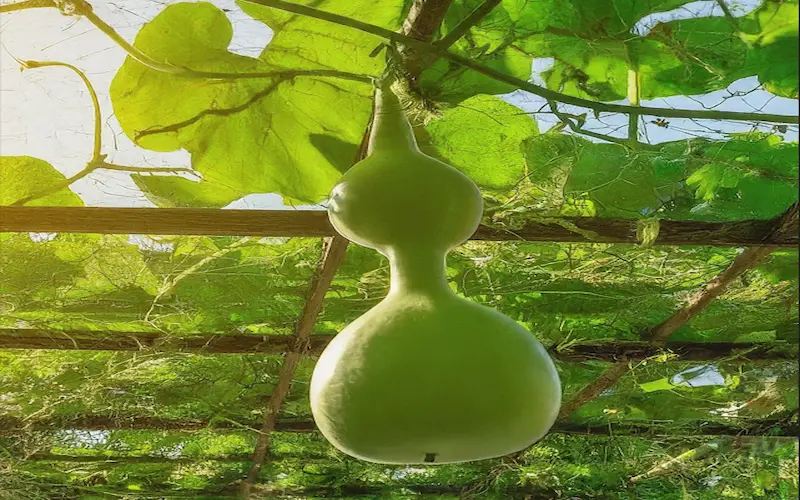
B. Post-Harvest Handling and Curing
- Cutting Techniques: Use a sharp knife or pruning shears to cut the gourd from the vine, leaving a short stem attached. Avoid tearing or twisting, as this can damage the plant and affect future fruiting.
- Curing Process: Allow harvested gourds to cure for 1-2 weeks in a warm, dry location with good air circulation. This helps harden the skin, making them more durable for storage and crafting.
C. Creative Uses for Bottle Gourds
- Kitchen Delights: Incorporate fresh bottle gourd into various culinary creations. From soups and stews to stir-fries, its mild flavor complements a wide range of dishes.
- Crafting and Decor: Explore the artistic side of bottle gourds by using them in crafts. Create birdhouses, utensil holders, or decorative pieces by letting your imagination run wild.
- Seeds for Next Season: Save seeds from mature gourds for the next planting season. Ensure they are fully dried before storage in a cool, dry place.
Harvesting bottle gourds at the right time and applying proper post-harvest techniques opens the door to a multitude of creative possibilities, both in the kitchen and as versatile crafting materials. Explore the full potential of your bottle gourd harvest with these insightful tips.
Warnings and Precautions During Bottle Gourd Cultivation
A. Potential Issues and Warnings
- Pest Infestations: Be vigilant for common pests like aphids, cucumber beetles, and squash bugs. Regularly inspect the plants and take prompt action to prevent infestations.
- Disease Management: Monitor for signs of fungal diseases such as powdery mildew and downy mildew. Apply preventive measures like proper spacing and adequate ventilation to minimize the risk.
- Overwatering Risks: Avoid overwatering, as it can lead to root rot and other water-related issues. Maintain a balance between keeping the soil moist and allowing it to dry slightly between watering.
B. Protective Measures for Plant Health
- Mulching Benefits: Apply a layer of natural mulch around the foundation of the plants to smother weeds, direct soil temperature, and hold dampness. These aides in keeping up with ideal developing circumstances.
- Companion Planting: Consider planting companion crops such as marigolds or nasturtiums, known for their pest-repelling properties. This natural deterrent can help protect your bottle gourd plants.
- Crop Rotation Practices: Implement crop rotation in successive growing seasons to prevent the buildup of soil borne diseases. Rotate bottle gourds with unrelated crops to maintain soil health.
By staying attentive to potential issues and implementing preventive measures, you can safeguard your bottle gourd plants and ensure a healthy, thriving garden. These warnings and precautions serve as a proactive guide to address common challenges, allowing you to enjoy a successful bottle gourd growing experience.
Wind Up Bottle Gourd Cultivation
A. Summing Up the Growing Process
In conclusion, mastering the art of bottle gourd cultivation involves a series of well-timed steps and attentive care. From the initial stages of seed germination to the final harvest, each phase contributes to the overall success of your bottle gourd garden.
B. Final Tips for Successful Bottle Gourd Cultivation
- Consistent Monitoring: Regularly monitor your plants for signs of pests, diseases, or nutrient deficiencies. Prompt intervention ensures a healthier and more productive garden.
- Optimal Harvesting: Harvest your bottle gourds at the right time, ensuring they reach maturity without over ripening. This guarantees a flavorful and versatile yield.
- Creative Exploration: Embrace the versatility of bottle gourds by exploring both culinary and crafting possibilities. From the kitchen to your creative endeavors, these cucurbits offer endless potential.
- Continuous Learning: As you cultivate bottle gourds, embrace a mindset of continuous learning. Each growing season provides insights that can enhance your skills and yield better results.
By following these guidelines and incorporating them into your bottle gourd growing routine, you set the stage for a rewarding and enjoyable experience. Whether you’re a seasoned gardener or a novice enthusiast, the journey of bottle gourd cultivation is a fascinating endeavor that promises both practical and creative rewards. Happy growing!
What is the planting season of bottle gourds?
Bottle gourds are planting in warm soil, so March and April are the best season of planting bottle gourds.
What is the best fertilizer for bottle gourds?
Phosphorus and potassium fertilizers are most benefited for the growth of bottle gourds. Nitrogen is also necessary but in small amounts.
How to grow bottle gourd indoor?
You can grow bottle gourd indoor in a pot filled with potting mix. Sow seed 1.1 inch deep and 3 seed plant in the pot. keep the pot in direct light source. Also keep the pot moist and warm.
Conclusion
In conclusion, the process of bottle gourds cultivation unveils a rich tapestry of growth, care, and creativity. From the strategic initiation of seeds to the meticulous care throughout the plant’s life cycle, each step contributes to the bounty of versatile gourds.
Harvesting at the precise moment and implementing post-harvest techniques further enhances the rewards of your labor. Beyond the kitchen, bottle gourds extend their influence into the realm of crafts, allowing for imaginative expressions and functional creations. As you embark on this horticultural adventure, remember that the cultivation of bottle gourds is not just a science but an art—a dynamic process that invites continuous learning and exploration. So, embrace the journey, tend to your plants with diligence, and savor the satisfaction of a thriving bottle gourd garden.
Please Write Your Comments